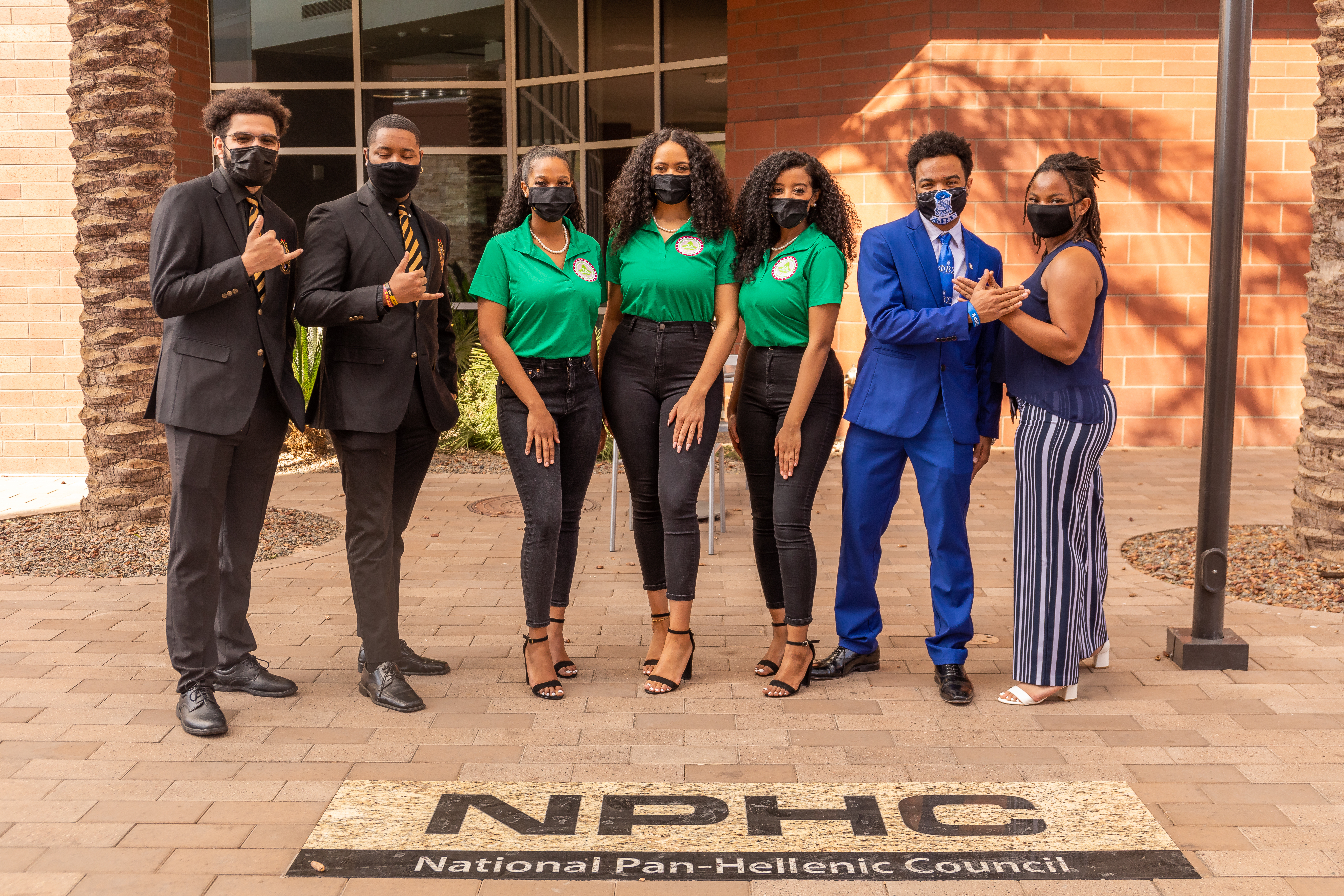New plots honor Divine 9 sororities and fraternities at ASU
A powerful symbol of the service and legacy of ASU’s Black Greek letter organizations was installed in February 2021 at the Greek Leadership Community Center: nine plots representing Alpha Phi Alpha fraternity, Alpha Kappa Alpha sorority, Kappa Alpha Psi fraternity, Omega Psi Phi fraternity, Delta Sigma Theta sorority, Phi Beta Sigma fraternity, Zeta Phi Beta sorority, Sigma Gamma Rho sorority and Iota Phi Theta fraternity.
The plots themselves are pillars about four feet tall made of red granite that was saved from a Hayden Library renovation. The pinths feature the crests and mottos of each organization arranged in a semicircle in order of founding year.

National Pan-Hellenic Council leaders near the plots in the ASU Greek Leadership Village. From left: Ahmad Jones, Orderah Ozoh, Lauren Rowe, Courtnee King, Meron Mitiku, Style Ranger and Janae Stevenson. Photo by Asa Culver.
The students who proposed and championed this effort before the Greek Leadership Community Center and Greek Leadership Village was built explained in their proposal that plots are traditional to historically Black colleges and universities but have also been featured at predominantly white institutions such as Duke University, Wake Forest University and others in recent years. The plots are symbols of the legacy and service of each National Pan-Hellenic chapter (collectively known as the Divine Nine) at ASU and also serve as a place to gather and reflect for current members and alumni.
ASU biochemistry senior Meron Mitiku, who is president of the National Pan-Hellenic Council at ASU, said that the installation is prominently placed at the front of the Greek Leadership Community Center and Village and that it will be a meaningful spot for generations of sorority and fraternity members.
“They’re a celebratory space for our members and a representation of our hard work on campus. With the GLV none of our chapters are present living in the GLV, and so it serves [as a reminder] that we’re still here and we have a purpose. And it’s symbolic of all the hard work we’ve done in the community,” Mitiku said.
The NPHC chapters at ASU host service and philanthropy around women’s health, mentorship, leadership, academics, mental health and much more.
The alumni who first advocated for the plots wrote in their proposal that the space will be treated as sacred grounds. The legacy of the plots and many aspects of the Divine Nine’s culture can be traced back to slavery, and the proposal writers described the plots as symbolically tracing back to a time when confiscated Confederate land was divided into plots for newly freed slaves. “The existence of these plots will be of the utmost importance and will be held dearly to our hearts. With that in mind, it is our hope that this same sense of sacrality be held near and dear to the hearts of non-NPHC members living at the Greek Village,” the proposal said.
Mitiku credits the NPHC members who began the effort and said the plots signify the big impact that even a Greek council with a comparatively smaller membership has on ASU’s campus.
“Oftentimes, we’re kind of overlooked because we are smaller. ... But our impact doesn’t reflect our size. So we work to serve the community. We’ve been doing that since we've all been chartered here on this campus. So it's nice that we have representation for our work, and that will be acknowledged by the university,” she said.